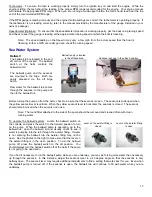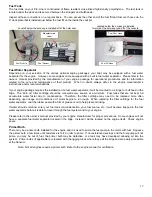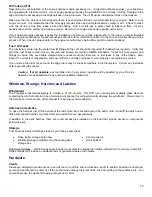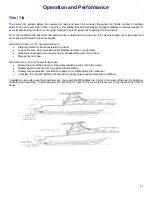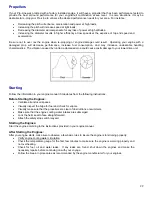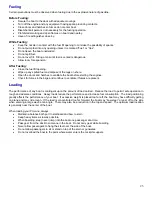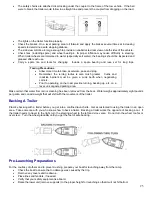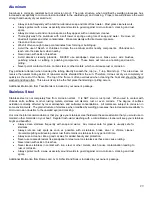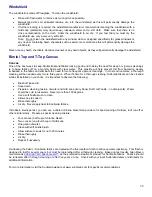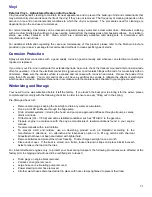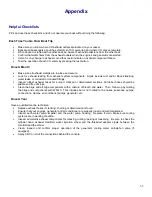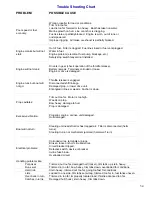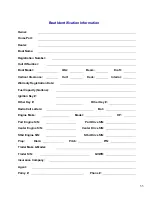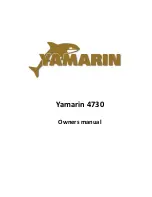
29
Aluminum
Aluminum is corrosion resistant but not corrosion proof. The grain structure, when modified by welding processes, has
increased susceptibility to micro-corrosion (invisible to the unaided eye) and cracking. Proper care will preserve the weld
strength and beauty of your aluminum:
Always clean frequently with a mild non-abrasive soap and lots of fresh water. Most glass cleaners work.
Always protect with a wax, especially around welds to guard against micro-corrosion, cracking and rust
spots.
Always remove rust and corrosion spots, as they appear, with an aluminum cleaner.
Thoroughly wash the aluminum with a soft towel or sponge using lots of soap and water. Remove all
dried salt crystals and other contaminates. Rinse completely with direct water pressure.
Clean and rinse it well.
Wash it often enough to keep contaminates from forming or building up.
Avoid the use of bleach or chlorides to clean the aluminum and/or nearby components. Chlorides can
leach onto the aluminum when nearby.
Never clean with acids or bleaches.
Avoid abrasive cleaning products. NEVER use sandpaper, steel wool, brass wool, wire brushes,
polishing wheels, or rubbing or polishing compounds. These items will remove anodizing and lead to
pitting.
Never permit contact with iron, carbon steel, or other metals, which could cause rust or corrosion.
Pay particular attention when cleaning the tubing directly beneath the top (i.e., T-top, Bimini top). This area does not
receive the natural rinsing action of rainwater and is shielded from the sun. Therefore, it does not dry as completely or
quickly as the rest of the frame. The top of the frame is often overlooked when cleaning the boat and should be hand
washed and dried often. This area is likely to be the first place that staining or pitting occurs.
Additional information from Taco Metals is included in your owner’s package.
Stainless Steel
Stainless steel is not completely free from corrosion attack. It is NOT stain or rust proof. When used in contact with
chloride salts, sulfides or other rusting metals, stainless will discolor, rust or even corrode. The degree of surface
oxidation is directly affected by local atmosphere and saltwater concentrations. All metals are subject to corrosion in
some environments. The grain structure of stainless, when modified by welding processes, has increased susceptibility to
micro-corrosion (invisible to the unaided eye) and cracking.
Our most helpful recommendation is that you give your stainless steel hardware the same attention that you would use to
maintain other materials on your boat. Regular fresh-water washing with a mild abrasive cleaner will keep your stainless
bright and beautiful.
Always clean stainless frequently with soap and water. Any cleaner safe for glass is usually safe for
stainless
Always remove rust spots as soon as possible with a stainless, brass, silver or chrome cleaner.
Irreversible pitting will develop under rust that remains on stainless for any period of time.
Always use a cleaner, like a good car wax, for added beauty and protection.
Never use coarse abrasives like sandpaper or steel wool on stainless as these can cause rusting.
Never clean with acids or bleaches.
Never leave stainless in contact with iron, steel or other metals, which cause contamination leading to
rust or corrosion.
Always protect with a wax, especially around welds to guard against micro-corrosion, cracking and rust
spots.
Additional information from Romac and G. G. Schmitt and Sons is included in your owner’s package.
Summary of Contents for 2012 21 CC
Page 6: ...2...

